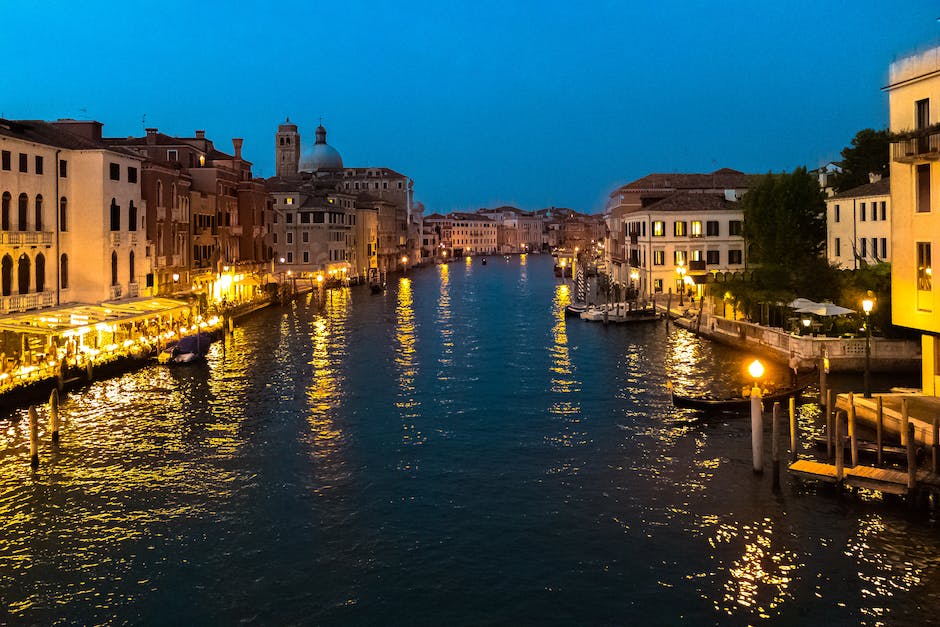Central Europe, a mosaic of nations, is celebrated for its deeply rooted heritage, breathtaking sceneries, and a robust economy. This exuberant and spirited segment of Europe stands as a beacon for business and commerce, magnetizing a cosmopolitan crowd of investors, entrepreneurs, and professionals who are eager to be part of its prosperity.
Central Europe is a region situated in the heart of the European continent. It shares borders with Germany to the west, Austria and Switzerland to the south, Poland and the Czech Republic to the east, and Slovakia and Hungary to the southeast. Although there is no fixed list of countries that fall under Central Europe, some of the commonly recognized countries that belong to this region are Austria, Czech Republic, Germany, Hungary, Poland, Slovakia, and Switzerland.
Although Central European countries have diverse cultural heritages and languages, they share common characteristics that make them a cohesive region. Central Europe is known for its strong work ethic, high-quality infrastructure, and well-educated workforce, which has created a favorable business environment for companies looking to establish a presence in this part of the world.
The region’s strategic location and excellent transportation networks make it a gateway for trade between Eastern and Western Europe. Moreover, with the integration of these countries into the European Union, Central Europe has become an attractive destination for foreign direct investment, fostering economic growth and creating numerous job opportunities.
Central Europe also benefits from its proximity to established markets and its well-developed industrial sectors. The manufacturing, automotive, and technology industries have thrived in this region, attracting multinational corporations and startups alike. Additionally, the strong emphasis on innovation, research, and development has positioned Central Europe as a hub for technological advancements and cutting-edge solutions.
In conclusion, Central Europe offers immense potential for individuals and businesses seeking professional growth and success. The countries in this region possess a unique blend of history, culture, and economic opportunities that make it an appealing destination for professionals and entrepreneurs from around the world. In the upcoming sections of this blog post, we will explore each country in Central Europe in more detail, highlighting their unique business landscapes and key industries. Let us dive deeper into the world of Central Europe and uncover the potential it holds for professionals and companies alike.
Introduction
Central Europe is a region in Europe that comprises several countries with diverse landscapes, rich histories, and vibrant cultures. Located at the heart of the continent, Central Europe includes countries such as Germany, Poland, Austria, Czech Republic, Slovakia, Hungary, and Switzerland, among others.
These countries possess a strategic location and historical significance, which have played a crucial role in shaping Europe as we know it today. From the vast forests of Germany to the majestic peaks of the Swiss Alps, Central Europe offers a varied and picturesque landscape that attracts tourists from all over the world.
In addition to its natural beauty, Central Europe is also known for its economic prowess and technological advancements. Countries like Germany and Switzerland have become global leaders in industries such as automotive manufacturing, technology, finance, and pharmaceuticals.
Furthermore, Central Europe boasts a rich cultural heritage, with each country offering its own unique traditions, folklore, and cuisine. From the fairy-tale castles of Bavaria to the historic architecture of Prague, the region is a treasure trove of architectural wonders and artistic masterpieces.
With its strong infrastructure and well-developed transportation networks, Central Europe is also a hub for international trade and business. The region’s central location and well-connected rail and road networks make it an ideal gateway for expanding businesses and investment opportunities.
In this blog post series, we will explore the countries of Central Europe in detail, delving into their histories, cultures, economies, and business landscapes. Whether you are a seasoned traveler, a business professional looking for investment opportunities, or simply curious about this fascinating region, this series will provide you with valuable insights and knowledge about Central Europe and its diverse offerings.
Stay tuned as we embark on this exciting journey to discover the wonders of Central Europe – a region that combines tradition and modernity, natural beauty with economic prowess, and a rich cultural tapestry that has captivated countless visitors throughout history.

Situated in the heart of Europe, Central Europe is a region that comprises a diverse group of countries including Germany, Austria, Czech Republic, Hungary, Poland, Slovakia, Slovenia, and Switzerland. Nestled between Western Europe and Eastern Europe, this region plays a significant role in the continent’s cultural, historical, and economic dynamics.
Central Europe’s strategic location has historically made it a crossroads between various civilizations and cultures. It has been a melting pot of traditions, languages, and beliefs, contributing to its unique identity and rich heritage. This region has witnessed the rise and fall of numerous empires, from the Holy Roman Empire to the Habsburg Empire, which has left a lasting imprint on its architecture, art, and traditions.
Moreover, Central Europe’s geographical position has proved advantageous in terms of trade and commerce. With its landlocked status, the region has developed strong ties with neighboring nations, fostering robust economic relationships. As a result, Central Europe has emerged as a crucial economic hub, attracting foreign investments and contributing significantly to the European economy.
Furthermore, the countries of Central Europe share several common characteristics that strengthen their regional ties. They are known for their expertise in manufacturing, engineering, and technology, which has led to the growth of various industries. Additionally, these countries have increasingly become attractive destinations for tourism, thanks to their stunning landscapes, historical sites, and vibrant cultural scenes.
While each country in Central Europe has its distinct traditions and customs, they are united by their rich cultural heritage, shared histories, and common challenges. Together, they form a dynamic region that holds immense potential for growth and development.
In conclusion, Central Europe’s location at the heart of the continent has bestowed upon it a pivotal role in Europe’s cultural, historical, and economic landscape. Its unique position as a crossroads and its shared characteristics have shaped this region into a vibrant and influential part of Europe. As we delve deeper into exploring the countries and intricacies of Central Europe, we will uncover the fascinating stories and remarkable achievements that make it an essential asset to the global community.
Understanding the countries included in Central Europe

Understanding the countries included in Central Europe is of utmost importance in today’s globalized world. As businesses expand and trade becomes more intricate, having a thorough knowledge of this region allows companies to make informed decisions, foster partnerships, and capitalize on untapped opportunities.
Firstly, Central Europe is home to some of the fastest-growing economies in Europe. Countries like Poland, Hungary, the Czech Republic, Slovakia, and Austria have experienced significant economic development over the past few decades. Their strategic location, improved infrastructure, and skilled workforce make them attractive investment destinations. Ignoring or overlooking these countries can mean missing out on valuable markets and potential business growth.
Moreover, Central Europe plays a crucial role as a crossroad between East and West. Geographically, it acts as a bridge connecting Western European countries with the countries of Eastern Europe and the Balkans. This unique position creates an ideal environment for business expansion and regional integration. Having a solid understanding of the political, cultural, and economic dynamics in Central Europe is therefore essential for companies looking to establish themselves as key players in this rapidly evolving landscape.
Additionally, Central Europe offers a vibrant consumer base with diverse needs and preferences. The countries in this region boast a combined population of over 65 million people. Understanding the local cultures, consumer behaviors, and market trends is crucial for businesses aiming to effectively tailor their products or services to fit the demands of this specific market. Conducting thorough market research, engaging with local communities, and building strong partnerships with regional players are all key steps in successfully tapping into the potential of Central Europe.
Lastly, Central Europe’s participation in the European Union and its integration into the global economy cannot be ignored. These countries benefit from EU membership, including access to a large internal market, common trade policies, and increased political stability. Understanding the intricacies of Central Europe’s relationship with the EU can help businesses navigate regulatory frameworks, take advantage of trade agreements, and understand the potential impact of policies on their operations.
In summary, a comprehensive understanding of the countries included in Central Europe is crucial for businesses aiming to thrive in today’s global marketplace. Whether it is the rapidly growing economies, their unique geographical position, the diverse consumer base, or their EU membership, Central Europe offers numerous opportunities for companies willing to invest time and effort into understanding the region. By prioritizing knowledge of these countries, businesses can position themselves strategically and make informed decisions that will contribute to their long-term success.
Defining Central Europe
Central Europe is a region of significant cultural, political and economic importance, with a complex history that has shaped its identity in multiple ways. The categorization of what constitutes Central Europe is not static and can vary based on different perspectives, historical developments, and geopolitical factors.
Traditionally, Germany, Austria, the Czech Republic, Hungary, Poland, Slovakia, and Switzerland have been commonly recognized as Central European countries. The region’s designation derives from their geographical location and historical connections to Central Europe. These countries have acted as a bridge between Western and Eastern Europe, sharing cultural, historical, and economic ties with both sides.
The countries of Central Europe have experienced similar political and social influences throughout their history, which have contributed to their identification as Central European nations. Many of them have a common background of being part of the Austro-Hungarian Empire, the Holy Roman Empire, or the Soviet Union. These historical connections continue to shape their culture, language, and socio-economic development.
Additionally, the economic development and level of industrialization in these countries also contribute to their inclusion in Central Europe. These countries are known for their well-established industries, developed infrastructure, and strong economies, which align with the overall perception of Central Europe.
However, defining Central Europe is not absolute, and it can vary. Other countries such as Slovenia, Croatia, and Serbia are sometimes included in discussions regarding Central Europe due to their historical and cultural ties with the region.
In conclusion, the categorization of Central Europe is complex, and the definition of what constitutes Central Europe is subject to change based on different factors. However, the general consensus includes countries like Germany, Austria, the Czech Republic, Hungary, Poland, Slovakia, and Switzerland, which share distinctive historical, geographical, and economic attributes that position them within the realm of Central European countries.
Debates about the countries included in Central Europe

Central Europe is a region that has been the subject of various definitions and debates throughout history. The inclusion of countries in Central Europe has often been a topic of contention, with different perspectives and criteria shaping the understanding of this region.
One common understanding of Central Europe includes countries such as Germany, Poland, the Czech Republic, Slovakia, Austria, Hungary, and Switzerland. These countries are typically considered central within the European continent and share similar geographic and historical characteristics. They have also been influenced by both Eastern and Western European cultures, making their classification as Central European somewhat nuanced.
However, it is important to note that there are alternative definitions and debates regarding the composition of Central Europe. Some scholars argue that Central Europe should include additional countries like Slovenia, Croatia, Serbia, and Romania based on cultural, historical, and geopolitical factors. These countries, although located to the southeast of the traditionally accepted Central European countries, have strong historical connections and have experienced common influences from neighboring regions.
Furthermore, the political landscape of Central Europe has evolved over time, adding complexity to its definition. For example, during the Cold War era, countries like Czechoslovakia, Hungary, and East Germany were part of the Eastern Bloc and therefore often classified as Eastern European. The reunification of Germany and the fall of the Iron Curtain led to a reevaluation of these classifications, as formerly Communist countries became integrated into the European Union and aligned themselves more closely with Western European principles.
In conclusion, the definition of what countries comprise Central Europe can vary depending on different factors, including geography, history, culture, and politics. While certain countries like Germany, Poland, and the Czech Republic are commonly associated with Central Europe, there are ongoing debates about the inclusion of other neighboring countries. Ultimately, the understanding of Central Europe should take into consideration a combination of these factors, as well as the perspectives of both scholars and the residents of the region themselves.
Factors considered for categorizing a country as part of Central Europe

The classification of a country as part of Central Europe depends on several factors, including its geographical location, historical background, cultural affinities, political and economic integration, and perception and recognition. To elaborate further, let’s delve into each of these factors.
Firstly, a country’s geographical position plays a significant role in its classification as part of Central Europe. Generally, Central Europe refers to the region between Eastern and Western Europe, bordered by the Baltic and Adriatic Seas to the north and south, respectively. Countries that lie in this central corridor are more likely to be classified as part of Central Europe.
Secondly, the historical background of a country is another crucial factor in determining its status in the region. Central Europe has a rich and complex history, marked by various cultural and political influences. Factors such as historical alliances, invasions, and empires play a significant role in determining a country’s status in the region. Nations with a deep-rooted historical connection to Central European powers or movements are more likely to be considered part of this area.
Thirdly, cultural similarities and common heritage are also crucial aspects in categorizing a country as part of Central Europe. Shared traditions, language groups, religious affiliations, and artistic influences are all taken into account. Nations that culturally align and demonstrate significant cross-cultural exchanges with other Central European countries are identified as part of the region.
Fourthly, participation in regional organizations and agreements can further solidify a country’s affiliation with Central Europe. Membership in organizations such as the Visegrád Group (V4), which includes Poland, Hungary, the Czech Republic, and Slovakia, or the Central European Free Trade Agreement (CEFTA), can reflect a country’s intent to integrate economically and politically within the region.
Finally, public perception and international recognition also factor into determining if a country is considered part of Central Europe. If a nation is commonly recognized as a Central European country by governments, academic institutions, and the general public, it is more likely to be assimilated into the region.
In summary, the classification of a country as part of Central Europe depends on its geographical location, historical background, cultural affinities, political and economic integration, and perception and recognition.
Visegrad Group

The Visegrad Group is an alliance of four Central European countries, including Poland, Hungary, Czech Republic, and Slovakia. Established in February 1991, the group aims to promote mutual cooperation in various areas such as politics, economy, culture, and defense.
The Visegrad Group, a political and cultural alliance of four Central European countries – Czech Republic, Hungary, Poland, and Slovakia – has been gaining more attention from the media lately. However, it is worth noting that only three out of the four countries have been making headlines in relation to the current illegal immigration crisis in the European Union. While Hungary has been relatively successful in reducing illegal immigration, Poland, Slovakia, and the Czech Republic have been struggling with the growing impact of this crisis. This includes issues such as an increase in crime rates, social tensions, and challenges in integrating immigrants. The Visegrad Group’s stance on this issue has been controversial, with some criticizing their refusal to accept a mandatory quota of refugees, while others support their stance on protecting their national sovereignty and security.
One of the primary objectives of the Visegrad Group is to enhance regional integration within Central Europe and support each other in their European Union (EU) membership. The four countries share a similar historical background, cultural heritage, and geopolitical challenges, which provide a solid foundation for their collaboration.
Economically, the Visegrad Group members have experienced significant growth and development over the years. Their proximity and shared economic interests have led to the establishment of numerous cross-border initiatives, improved transportation networks, and increased trade relations. The group also aims to align its strategies for attracting foreign direct investment and promoting innovation and research within the region.
Politically, the Visegrad Group countries cooperate closely in EU institutions, advocating for common interests and policies. They often collaborate on key issues such as migration, the European budget, and the future direction of the EU. The group’s strong collective voice has helped raise awareness of Central European perspectives and contributed to shaping EU policies that are more reflective of the region’s needs and challenges.
The Visegrad Group, consisting of four Central European countries – Poland, Hungary, the Czech Republic, and Slovakia, plays a significant role in promoting cultural exchanges and cooperation among its member states. The group’s efforts are aimed at nurturing and reinforcing shared values, traditions, and historical heritage. To achieve this, the group organizes various cultural programs, festivals, and events that encourage artists, musicians, and writers to showcase their work and promote cross-cultural understanding across borders.
Apart from cultural cooperation, the Visegrad Group also focuses on enhancing its defense and security capabilities. The group aims to synchronize its defense strategies and strengthen its military capabilities. As such, the members participate actively in joint military exercises, training programs, and defense industry cooperation. This mutually supportive defense alliance is aimed at boosting regional security and contributing to NATO’s collective defense efforts.
Overall, the Visegrad Group serves as a platform for joint decision-making, where common challenges and opportunities are addressed collectively. Through their continuous engagement, the group aims to bolster regional integration, enhance economic growth, and strengthen its position within the European Union. The group’s efforts have contributed significantly to Central Europe’s stability and prosperity, making it a crucial player in the region.
Visegrad Group and its importance in Central Europe

The Visegrad Group, consisting of four countries – Poland, Hungary, Czech Republic, and Slovakia, plays a crucial role in shaping and strengthening Central Europe. Established in 1991, the Visegrad Group, also known as V4, was formed to foster cooperation and integration among its member states.
One of the primary objectives of the Visegrad Group is to promote economic and political cooperation, as well as to enhance cultural ties within Central Europe. By working together, these countries aim to leverage their geographical proximity and shared historical experiences to tackle common challenges, such as economic development, infrastructure, and regional security.
Economically, the Visegrad Group acts as a united front to attract foreign investment, boost trade, and foster innovation. By aligning their economic strategies, the V4 nations have been able to provide a more attractive business environment for international companies seeking to tap into the Central European market. The Group also actively promotes the intra-regional flow of goods, labor, and capital to strengthen their collective economic power.
Politically, the Visegrad Group has emerged as a significant voice within the European Union (EU). By presenting a unified stance on key issues, the V4 countries have successfully influenced EU policies and decision-making processes. Their shared agenda often revolves around preserving national identity, safeguarding sovereignty, and promoting a more balanced approach to EU integration. Through coordinated efforts, the Visegrad Group has been able to ensure their interests are represented in the larger European arena.
Furthermore, the Visegrad Group places great emphasis on cultural exchange and cooperation. Recognizing their shared heritage, linguistic similarities, and historical ties, the member states collaborate on various cultural initiatives, educational programs, and youth exchanges. These efforts not only foster a sense of community among the V4 nations but also contribute to a stronger Central European identity on the global stage.
Overall, the Visegrad Group plays a vital role in shaping the future of Central Europe. Through its commitment to economic cooperation, political influence, and cultural integration, the V4 nations are working towards building a prosperous and secure region. By leveraging their collective strength, they aim to create an environment conducive to further growth, innovation, and collaboration in Central Europe as a whole.

